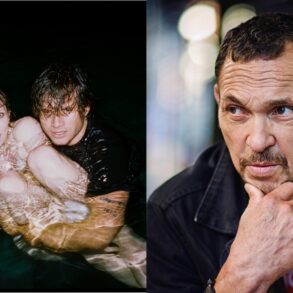
Outdoor advertising could be a national treasure on the high street if it took more inspiration from street art, argues Posterscope’s Alex Marks.
National treasure/rogue street artist Banksy recently hit the headlines with new artworks across the capital, all of which had an animal theme.
From a rhino humping a broken-down car to monkeys swinging from a bridge. It’s fair to say there’s been a mixed response from people. Contractors who were ordered to take down one of the pieces were booed by members of the public, while another, a wolf howling on a satellite dish, was promptly stolen. It appears the public generally has a favorable response, the authorities less so.
Putting images on things in a public place is a practice that has been part of our cultural heritage for tens of thousands of years. From cave paintings to street graffiti, humans have been prolific artists since we walked upright. We respond to our environment and our experiences therein and that is reflected in our art. So, while people during the Stone Age would paint pictures of themselves hunting bison or having sex (there wasn’t a lot else going on), modern street artists might make political statements, mark gang territory, or just create something that brightens up the urban landscape.
At the high end of the spectrum to compare street art to advertising is to compare a composer like Vivaldi to a high school band. One is a sublime creation, the other a practical and efficient delivery of a message.
Powered by AI
Explore frequently asked questions
But what if it wasn’t so?
OOH advertising, at its best, can be seen as street art. Its ability to capture attention and create engagement in a public space is something that no other media can do. But there’s been a growing resistance from some quarters in recent years to street furniture that is asked for.
The idea that ads presenting themselves in a public space is an affront to people’s sensitivities at a time when we are exposed to more advertising messages than at any time in our history. But if more people knew that 46p in every £1 spent goes back into communities to pay for transport infrastructure and local initiatives such as grassroots football, then the hostility from some quarters would probably abate.
But part of the problem comes from what some call a crisis in creativity. From car design to logo rebrands, and to all pervasive advertising, much of it all, well, just looks the same.
Advertisement
This decline in creative effectiveness was highlighted in an IPA report in 2019 by Peter Field, in which tracking 24 years of data demonstrated that creatively awarded campaigns are now no more effective than the unawarded ones.
As to a probable reason, Orlando Wood, chief innovation officer at System 1 Group, points out that over the last 20 years or so, we’ve seen an incredible rate of change but also a migration towards systems that are centralized, standardized, and specialized. We have become more goal-oriented and self-absorbed as a society, less able to deal with the abstract. This impacts culture and, therefore, advertising. This is not something that is unique in history. There have been times from the Romans to the Renaissance when structural changes in society have changed the art, architecture, and craft we produce quite drastically.
So, as an industry, we need to do better.
More emotion, storytelling, comedy, implicit communication, cultural references, and less flatness. OOH’s diverse array of formats and technology, from 7dDynamic DOOH to special builds and pop-up brand activations to anamorphic 3D installations, enables brands to do almost anything they can dream of. Analysis of the IPA data bank shows that campaigns that draw an emotional response are nearly twice as effective as those that draw a rational one.
Advertisement
So, if we’re going to place ads that are unmissable as we go about our daily lives, let us make them things of wonder. If we want commercial gain, we need to entertain.
As advertising great Bill Bernach said. “All of us who professionally use the mass media are shapers of society. We can vulgarize that society. We can brutalize it. Or we can lift it on to a higher level.”
Suggested newsletters for you
Daily Briefing
Daily
Catch up on the most important stories of the day, curated by our editorial team.
Ads of the Week
Wednesday
See the best ads of the last week – all in one place.
The Drum Insider
Once a month
Learn how to pitch to our editors and get published on The Drum.
This post was originally published on this site be sure to check out more of their content.









